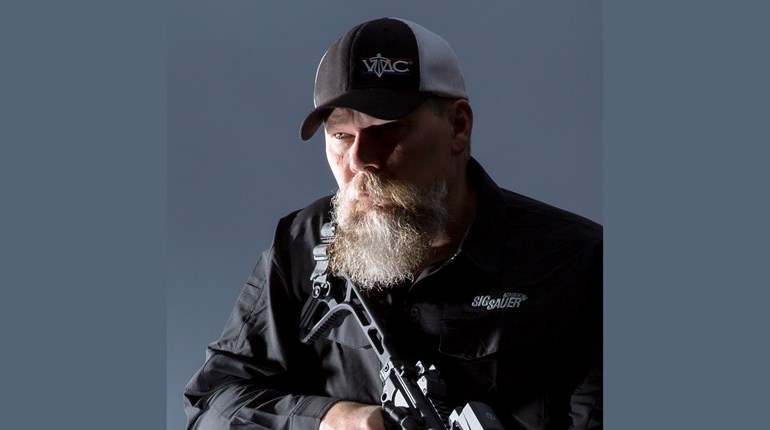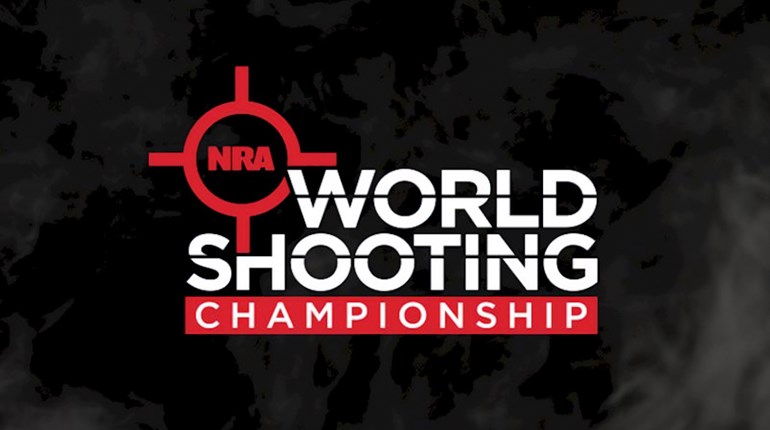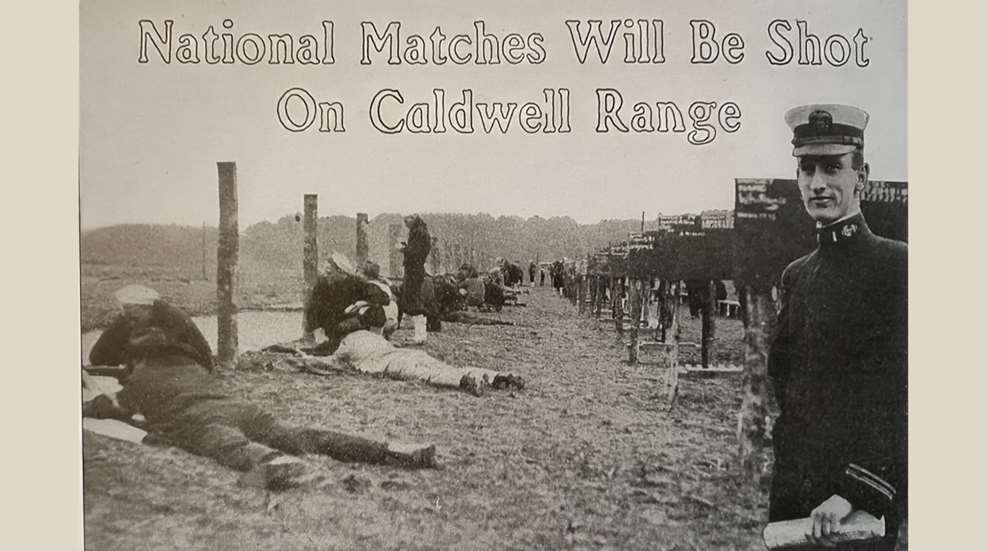
“The regulations under which the National Matches are held, provide for the attendance at government expense of a National Guard and a Civilian team from each state.”
—Arms and the Man, April 1919
Momentum generated from the return to National Match competition the year prior and a significant provisional change prompted match officials to coin the optimistic post-war catchphrase “One Hundred Teams in 1919” to attract record numbers of competitors to a new shooting venue. As approved in the War Department’s Bulletin No. 18 from 1919, entry restrictions were lifted and while federal assistance was still limited to one civilian and one National Guard team per state, any number of these teams could compete in addition to those from the various service branches.
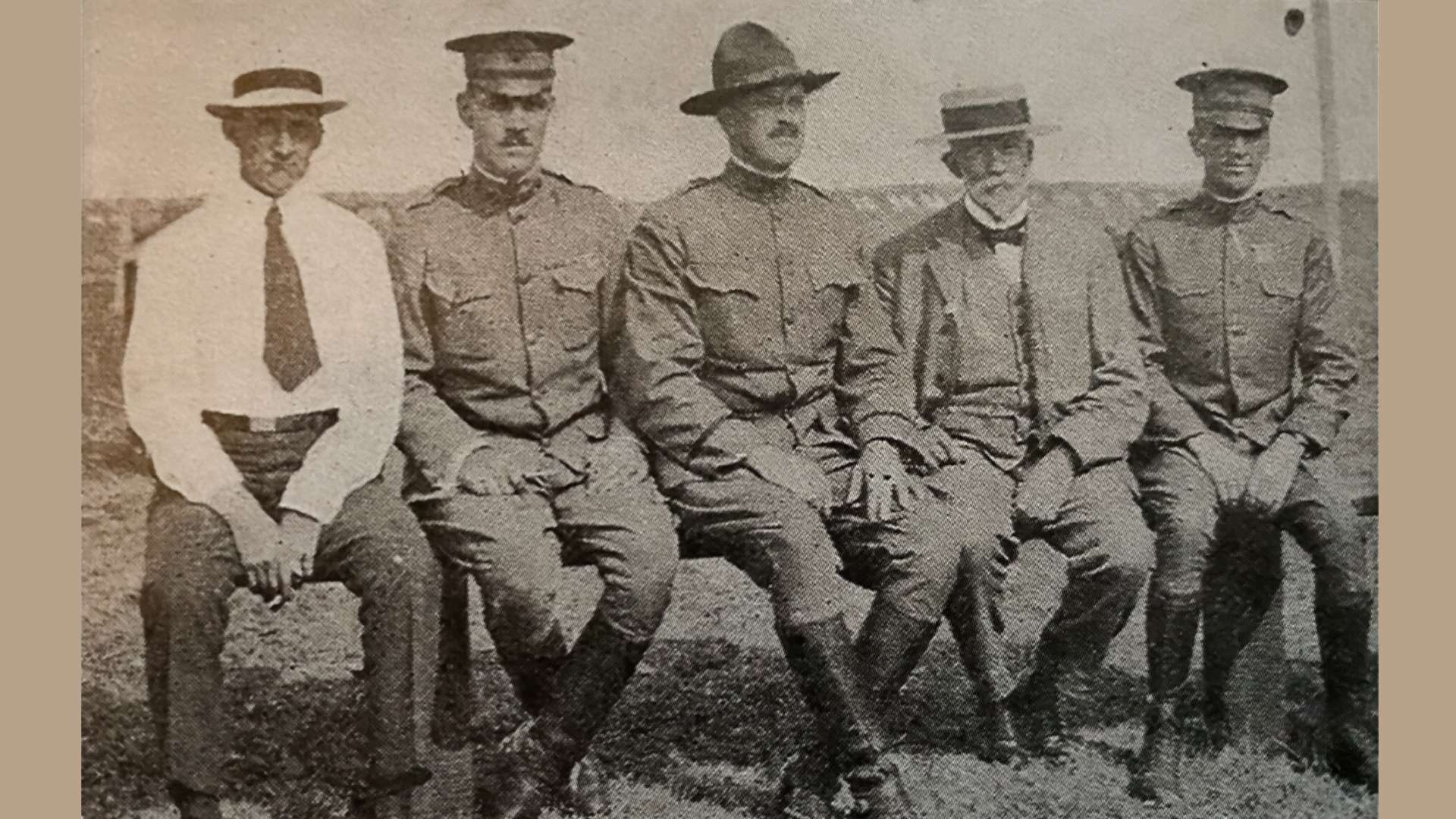
The National Board for the Promotion of Rifle Practice, reorganized in the final months of 1918 to a field of 14 members, included new Director of Civilian Marksmanship, Maj. Richard LaGarde, and the Assistant Secretary of the Navy, Franklin Delano Roosevelt, who was the Board’s chairman. In its first meeting of 1919, the Board voted unanimously to continue the National Matches and, among other things, restore and revise the arms and ammunition purchase and free-issue privileges to civilians and NRA-affiliated clubs to include modern military arms and more ammunition. And, as part of the postwar effort to tap into the popularity of marksmanship, the National Board for the Promotion of Rifle Practice also recommended adding .22 caliber events to the National Match program, mainly because smallbore shooting had become a widely accepted form of recreation during the war when supplies of .30 caliber ammunition were scarce.
Another offshoot of the momentum created by the resumption of the National Matches was the new role played by the Navy. During the National Board’s January meeting, one of its members, Navy Rear Admiral Charles Plunkett, offered the Navy’s recently opened Great Piece Meadows Range at Caldwell, New Jersey, as site of the 1919 National Matches. Col. Morton Mumma suggested that Camp Perry remain the location and when the range selection committee comprised of Plunkett, Mumma, LaGarde and Lt. Cols. Townsend Whelen, William Harllee, W. Garland Fay and the NRA’s Gen. Fred Phillips reviewed its options, it recommended that the Secretary of the Navy be invited to oversee the conduct of the 1919 National Matches on a Navy range. Hence, Caldwell was chosen.
A combination of factors appeared to have led to the Caldwell selection, which provided a highly recognized boost to the Navy, much in the same way that Florida officials were commended for their range-building efforts that led to Jacksonville as the National Match site in 1915 and 1916, though the Caldwell nod was most likely measured on a grander scale. Post-1918 National Match comment in Arms and the Man noted that “the work of the Navy teams at Camp Perry has given the Navy range forces confidence in the effectiveness of their work and made them feel that though they are the newcomers in the rifle-shooting world, they do not appear at a disadvantage in competition with the old-timers.”
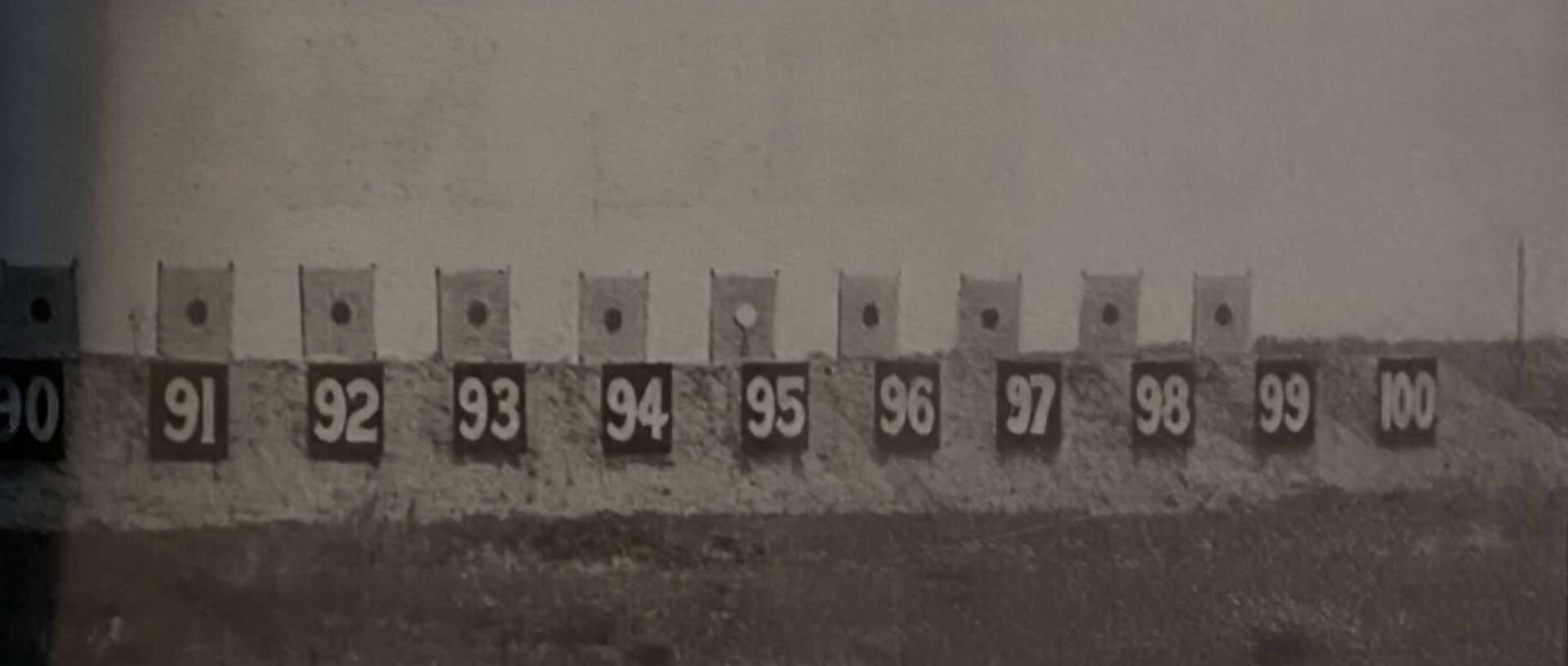
But what probably made Caldwell most appealing was the Navy’s contributions during the war. Plunkett’s successful command of naval guns ashore in France during World War I capped an effective campaign whereby the Navy had not only aggressively built but opened several ranges to train soldiers prior to wartime service overseas. These efforts were applauded and posed quite a contrast to earlier Camp Perry days, when the occasional naval victory at the National Matches was treated as more of a curiosity than anything else, like the time President William Howard Taft sent congratulatory letters to two midshipmen in 1909 that read, in part: “You of the Navy are not supposed to specialize in rifle practice,” and “it may appear that a sailor has little use for skill with the rifle.”
With the Marine Corps’ Harllee, who was assistant executive officer at the last three National Matches, as Executive Officer this year, the Navy conducted a widespread search to supplement the range staff with former Navy Rifle Rangemen to allow “this year’s match—our match—to break all records in the number of teams entered in the National Team Match and to set a high mark for years to come.” Enthusiasm on the part of Navy hosting the National Matches was evident in that the range was made available to teams and individuals in May 1919, when the actual competition wasn’t scheduled to start for more than three months. And assisting Harllee this year on the National Match staff were Whelen and Julian Hatcher, two men whose technical expertise and contributions to marksmanship development during the first half of the 20th century are legendary.
“That the smallbore range is destined to be an important feature of future National Matches cannot be doubted by those who have observed the operation of the miniature firing line at Caldwell … Sponsored by the National Rifle Association, approved by many prominent riflemen, and presented to the shooters of the country in as attractive a form as it appears at Caldwell, the outdoor smallbore game is starting off well.” —Arms and the Man, August 1919
Another renowned figure, Capt. Edward C. Crossman, was selected by the NRA to oversee the inaugural smallbore portion of the National Matches and his appointment as chief range officer was most appropriate given his tireless enthusiasm for and knowledge of the sport. A new range with 50 targets at distances of 50, 100 and 200 yards was built for the smallbore events, which featured courses of fire that resembled those on the big bore ranges. On hand to help Crossman was fellow Los Angeles Rifle Club member Capt. Grosvenor Wotkyns, Capt. W. H. “Cap” Richard of Winchester and Frank Kahrs of Remington, while the assistance of Capt. E. J. D. Newett was a special coup. Newett, a British citizen and an officer of that nation’s Society of Miniature Rifle Clubs, had extensive experience in mounting the British smallbore championships at Bisley, and lent his expertise to the fledgling efforts in the United States.
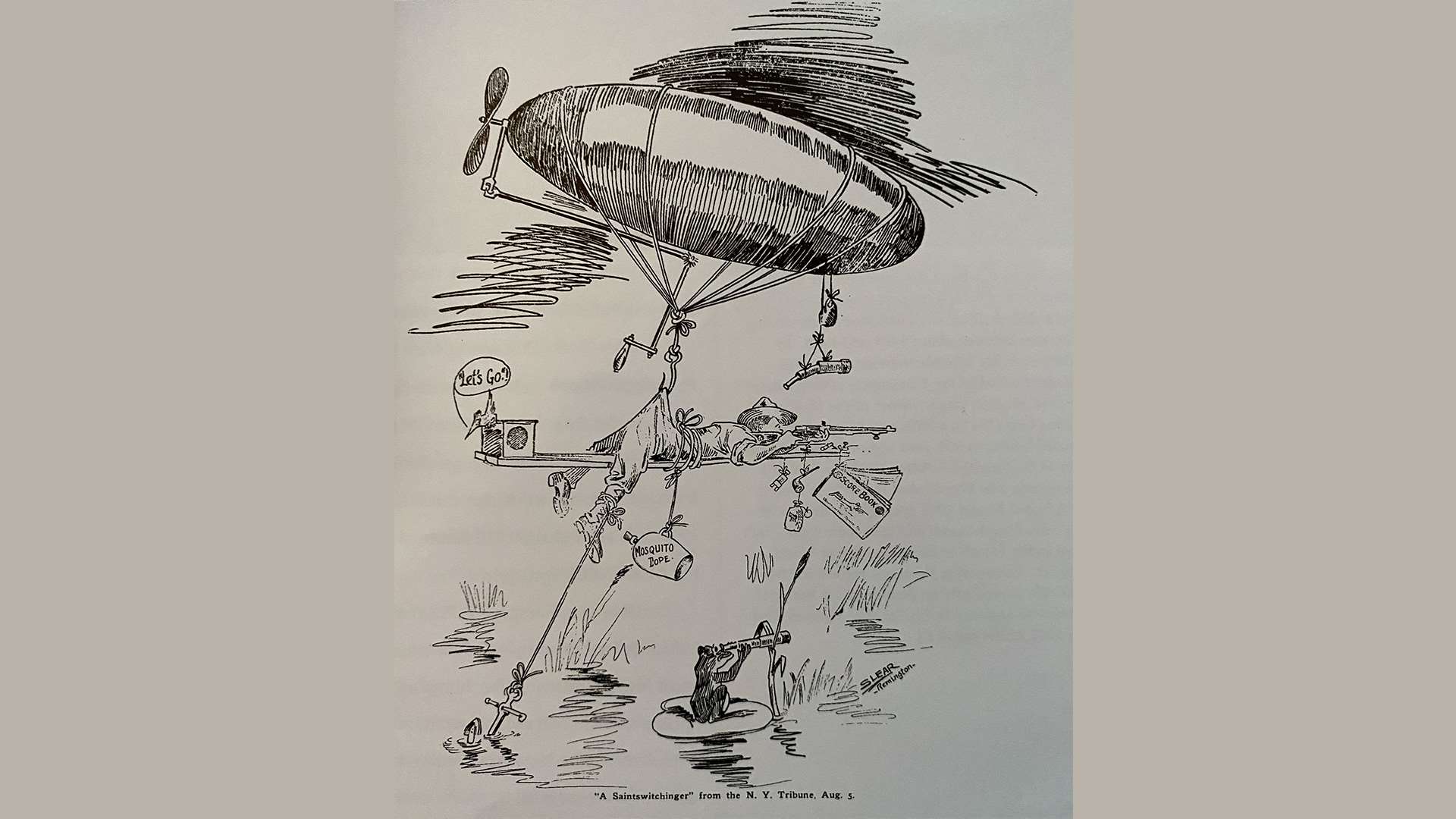
With virtually all preparations and assignments made, match officials were brought to their knees by the most significant weather occurrence in National Match history. Heavy rains forced a dam to give way near Morristown, New Jersey, and the Caldwell Range, as described in Arms and the Man, was flooded, “giving the range buildings the appearance of houseboats.” Yet with less than two weeks before the Navy’s Training School was slated to begin, Harllee led a crew of Navy and Marine Corps staff in what seemed an insurmountable task of reconstructing Caldwell. The smallbore range suffered the worst damage, as “the 200-yard smallbore butt capsized and drifted … and literally by diving, the missing equipment which incidentally weighed seven tons was located and righted.” Despite the valiant efforts of those tasked with range reconstruction, the 200-yard smallbore butts were not serviceable, putting that range out of commission. Less than two days after the flood had subsided, however, the bulk of Caldwell’s ranges were out of the water and relatively little sign of the devastation remained. The match schedule was not affected, save for the elimination of the 200-yard smallbore events, and shooters were left to grapple with the post-flood effects of hazy, humid and mosquito-laden conditions.
The Leech Cup Match opened the NRA portion of the 1919 National Matches and “Cap” Richard won with a perfect score. Richard drew special notice with his victory not only because it was his third such title, but because he fired a 200-grian bullet in what Arms and the Man described as “perhaps the heaviest bullet ever used in a military rifle in competition” through a “pressure barrel.”
John “Jack” Hession of New York won the Wimbledon Cup Match while the President’s Match went to Marine Sgt. J. B. Rhine. The Marines dominated the field of 72 teams in the Board competition, while the National Individual title went to Sgt T. B. Crawley of the American Expeditionary Force (A.E.F.) team. Both Board events in 1919 featured a change in conditions as 1,000-yard firing returned when the Model 1917 rifle used at the 1918 National Matches was replaced with the more distance-worthy Model 1903 Springfield.
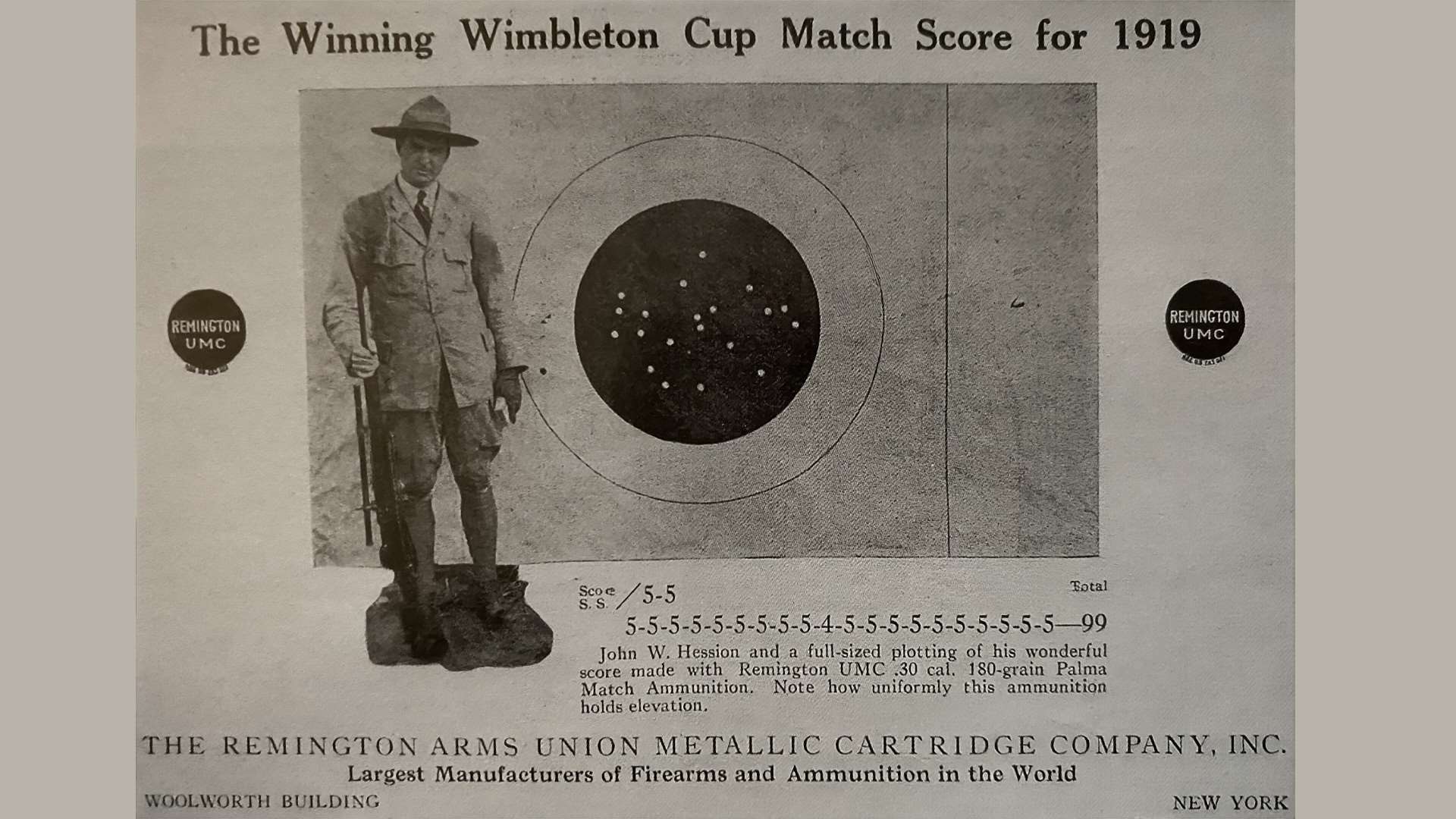
Olympic champion A. P. Lane won the NRA Individual Pistol title with a record 293x300 fired from his .45 Colt automatic. And as reported in Arms in the Man, Lane “shot his record score after hurrying from the rifle range, where he had been shooting a Springfield all the morning, a circumstance which makes his performance all the more remarkable.” The National Pistol Match went to Cavalryman C. J. Christofferson, whose victory was laced with irony, for part of his match preparation included a pistol tune-up at the competent hands of the second-place finisher—A. P. Lane.
At the same time the big bore and pistol events were being fired, smallbore shooters potted away and the contests proved popular enough that it was not uncommon for high power coaches to stop by the smallbore range and gather up a missing team member or two for centerfire shooting. And the prize schedule was pretty rich considering the short time that Crossman had to arrange the tournament. While half of the entry fees were returned to the winners in cash and the other half in medals and pennants from the NRA, there were also merchandise prizes like a BSA Number 12 Martini rifle, a gold watch valued at $50, and various cups and trophies donated by vendors and munitions companies.
The first National Smallbore Rifle Champion, contested over a single Dewar course of fire, turned out to be none other than Grosvenor Wotkyns with a 392. Wotkyns outshot “Cap” Richard by two points, and for his win he received a gold watch, gold medal and $6.30 in cash. Richard pocketed a whopping $4.70 and a bronze medal.
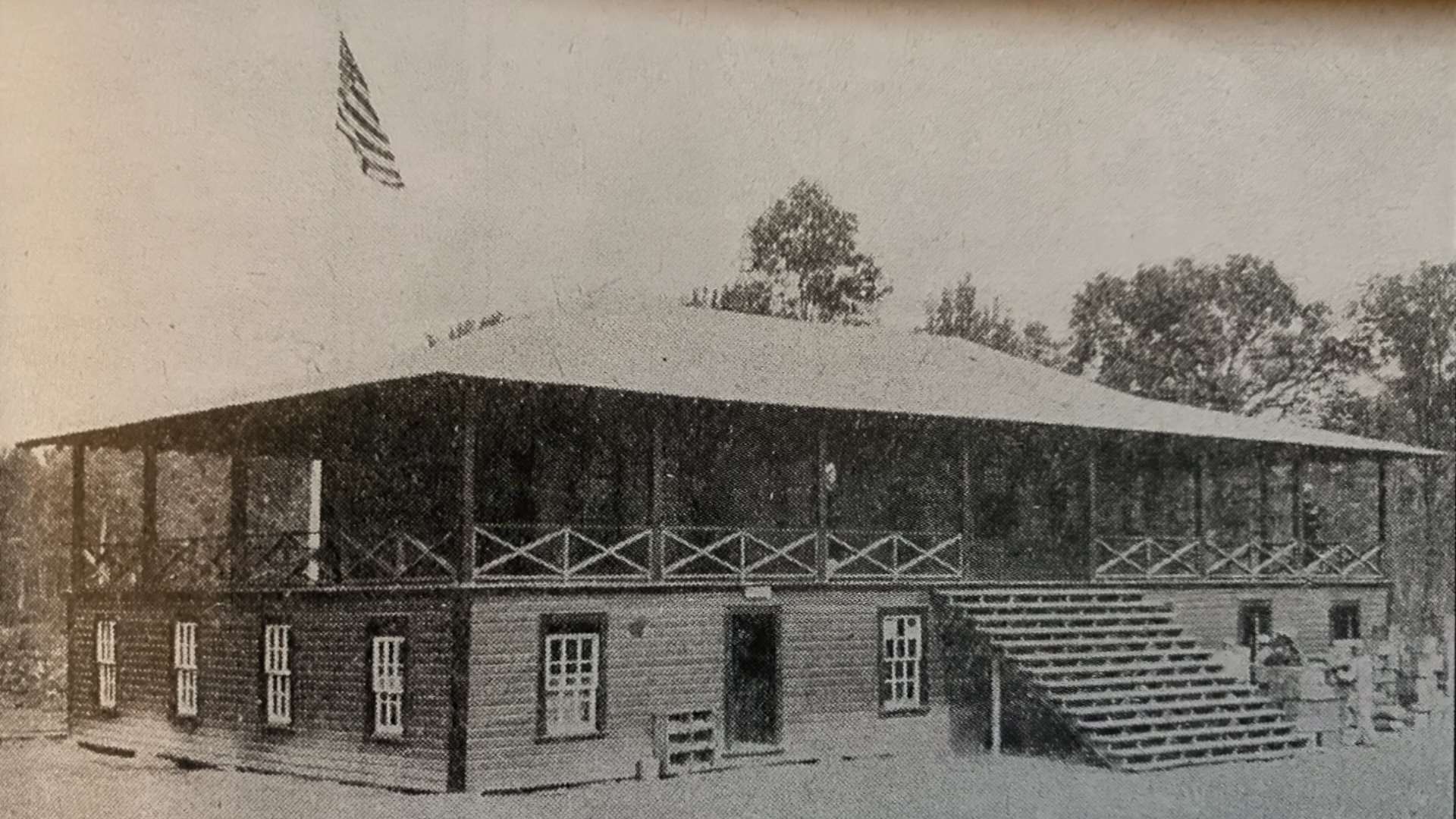
Besides the smallbore program, new National Match features this year included a trapshooting event and a police revolver team match, which drew three contenders and was won by a squad from Philadelphia. The shotgun competition attracted the likes of Adolph Topperwein, his sharpshooter wife Plinky and the legendary Annie Oakley, which prompted Arms and the Man to predict that “members of the fair sex will capture many of the trophies …” An All-Round Championship was also introduced, whereby participants were required to fire shotgun (100 targets), smallbore (Offhand Match of 10 shots at 100 yards), pistol (National Match Course with scores cut in half for a 150 possible) and big bore (Wimbledon Match). This challenging event was won by civilian P. A. Raymond out of Connecticut, followed by Navy shooters in the next three positions.
While the matches at Caldwell saw the return of NRA cash awards and featured a longer prize list than ever before in order to create “more of an opportunity for the fair-to-middlin’ shot to carry home something,” it also included the first President’s Hundred recognition in the President’s Match. The honor, an American version of the British King’s Hundred, was awarded to the top 100 shooters in the form of a special brassard. Other prizes included medal bars for high finishers in the NRA’s prominent matches and silver spoons that bore the NRA seal for re-entry matches, a popular award that prompted the following comment in Arms and the Man: “They (spoons) are not in the class of the ‘souvenir’ affairs you buy when you visit Niagara Falls or the station at Albuquerque on the way to California.”
Other notable occurrences this year included the collection of squadding fees in matches open to the public and the proposal to outfit civilian competitors in uniforms. Non-NRA members were allowed to participate in the matches and the squadding charges were meant to discourage multiple sign-ups and no-shows. In the National Individual and Pistol Matches, the fee was 25 cents if the shooter was not a member of an accredited team; 50 cents was the toll in NRA Matches regardless of team affiliation. The NRA’s idea to have civilians compete in uniform was actually proposed two years earlier but was deferred due to the war when conservation of the necessary material was critical. However, it was at the 1919 NRA Annual Meeting during the matches that a civilian uniform prototype was displayed and approval for its sale given. The discussion of civilians in matching hats, coats, trousers and spiral puttees was but one of many happenings that made this year’s matches so distinctive. And a bit of uniformity across the board was actually evident when special badges were worn by all competitors at Caldwell and served the dual purpose of securing range access and disclosing a shooter’s home state and affiliation.
“… there should surely be enough students interested in rifle practice who would be willing to defray the expenses of an ideal vacation in a well-conducted, carefully managed shooting camp …” —Arms and the Man, April 1919
Overall, this year served to expound the opportunities available within a growing National Match framework. Civilian participation, the successful firing school, program expansion and diversity, and the targeted solicitation of school and college attendance all served to broaden the appeal of the National Matches beyond its military origins. The NRA’s efforts to fuel the enthusiasm led to the development of what it called its state league movement, whereby a statewide competition system was employed to help in team selection for the National Matches. In addition, an editorial by Maj. C. B. Winder earlier in the year called for the retraction of the “as issued” rule and proposed the allowance of “any” rifles, sights, and ammunition, suggesting that more emphasis be placed on equipment and marksmanship development and less on military criteria.
On the NRA side of the program, great interest in the Offhand Match and its “any rifle” rule resulted in a large field of competitors “drawn by the fascinating prospect of getting away for once from the routine of strictly military positions and weapons ‘as issued,’” while a change in Board policy permitted competitors this year to buy selected issue arms while at the Matches. The purchase program allowed competitors to fire and test guns before buying once a deposit was left with the Ordnance Office.














